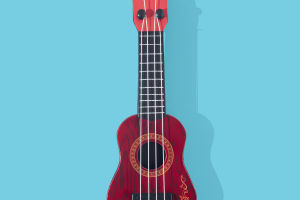The tuba is a low-pitched brass instrument that is often an integral part of orchestras.
It has a deep, rich tone that provides strong bass support for the band.
The history of the tuba dates back to the early 19th century, and it has occupied an important position in the music world since then.
The invention of the tuba is usually attributed to Germans Johann Gottfried Moritz and Wilhelm Wieprecht, who first applied for a patent for the instrument in 1835. The design of the tuba was based on a modified serpentine and tartar horn, two instruments that had been used in music for centuries at the time.
However, these instruments had issues with intonation and sound quality, which the tuba successfully resolved, leading to its adoption as a standard instrument.
The structure of the tuba includes a large bell, a long, curved pipe, and three to five pistons. The pistons are used to change the path of the airflow, thereby changing the pitch.
Typically, the tubing of the tuba is about 16 feet long, making it the largest and lowest-range instrument in the brass family. The tuba is available in a variety of keys, the most common being B flat and E flat, but there are also tubas in F and C.
In an orchestra, the tuba is often paired with the double bass, bass drum, and bass reed instruments such as the bassoon to provide the bass foundation for the orchestra.
The role of the tuba is not only to provide bass support, it can also play the main melody part in some works. For example, tuba solos can be heard in the works of Gustav Mahler and Richard Wagner. Modern composers also often use the unique timbre of the tuba to create specific musical effects.
In marching bands, the tuba is also indispensable. Due to its large size, the traditional tuba is not convenient to carry. Therefore, in marching bands, a modified version of the tuba called the sousaphone is often used.
This instrument, designed by American bandmaster John Philip Sousa, features tubing that wraps around the player's body, making it easier to carry and play while marching.
The playing technique of the tuba requires a high degree of professionalism and proficiency. The player needs to have a strong lung capacity and good breath control to maintain a stable sound quality and pitch when playing long phrases.
In addition, the fingering of the tuba is relatively complex, requiring the player to master the conversion of various scales and chords.
To improve tuba performance, many conservatories and music schools offer specialized tuba courses. Students in these programs not only learn basic playing skills but also study music theory, instrument maintenance, and repair.
Furthermore, participating in performances with various bands and orchestras is an essential part of a tuba player's development. Through actual performance experience, players can accumulate valuable insights and improve their skill level.
Beyond traditional orchestras, the tuba is widely used in modern music. Many jazz bands and pop bands utilize the tuba to add richness and depth to their music.
In jazz, the tuba sometimes replaces the double bass to play improvised bass lines. The unique timbre and powerful expressiveness of the tuba allow it to find its place in various musical styles.
The tuba is a very charming instrument. Whether in classical music, marching bands, or modern music, it has won wide acclaim for its unique timbre and powerful bass support ability.
With the development of music and the continuous improvement of performance technology, the tuba will continue to play an important role in the music world and bring people more musical enjoyment.


